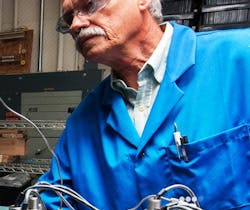SIL certification identifies all process hazards, estimates the risk of failure and determines that if a failure occurs; that the product will “fail safely.” Every component in an instrument must be examined and verified in respect to these criteria in order to comply with the SIL restrictions.
“Many customers are now requiring SIL certified products, as safety is essential. We wanted to provide an informational video and quick guide to help our industry use SIL,” says Jason Aldrich, product manager at SOR. SOR is a Kansas-based manufacturer of pressure, differential pressure, temperature, vacuum and level switches certified to the IEC 61508 safety standard.
When implementing Safety Instrumented Systems (SIS) in process plant environments such as power plants, offshore oil platforms, refineries and chemical plants, the SIL certification helps reduce risk at the process instrument level.
“As processes become more intricate and less tolerant, built-in safety features and rigorous in-house and third party testing is legally and morally mandated,” says Aldrich. “International and U.S. standards such as ANSI/ ISA 84 and other agency listings accompany most SOR instruments as a part of its continuing excellence program. Now the IEC 61508 Functional Safety Standard has been added to this impressive offering.”
As explained in the guide, for each instrument used within a SIS, the analysis team must concentrate their evaluation on the design and performance of its Safety Failure Fraction (SFF) and Probability of Failure on Demand (PFDavg). Every device in the SIF must meet or surpass the safety standards in both categories required by SIL to achieve SIL recognition.
“SIL standards allow for a manufacturer’s proven, in-use data that demonstrates reliability as well as fully assessed, third party analysis,” added Aldrich. “Although SIL is a powerful, peace-of-mind benefit, it is always the end-user’s responsibility to verify and document all calculations for the entire SIS safety loop. All instruments/devices in a SIF loop must work together to meet the SIL requirement.”
More information can be found on the SOR web site

